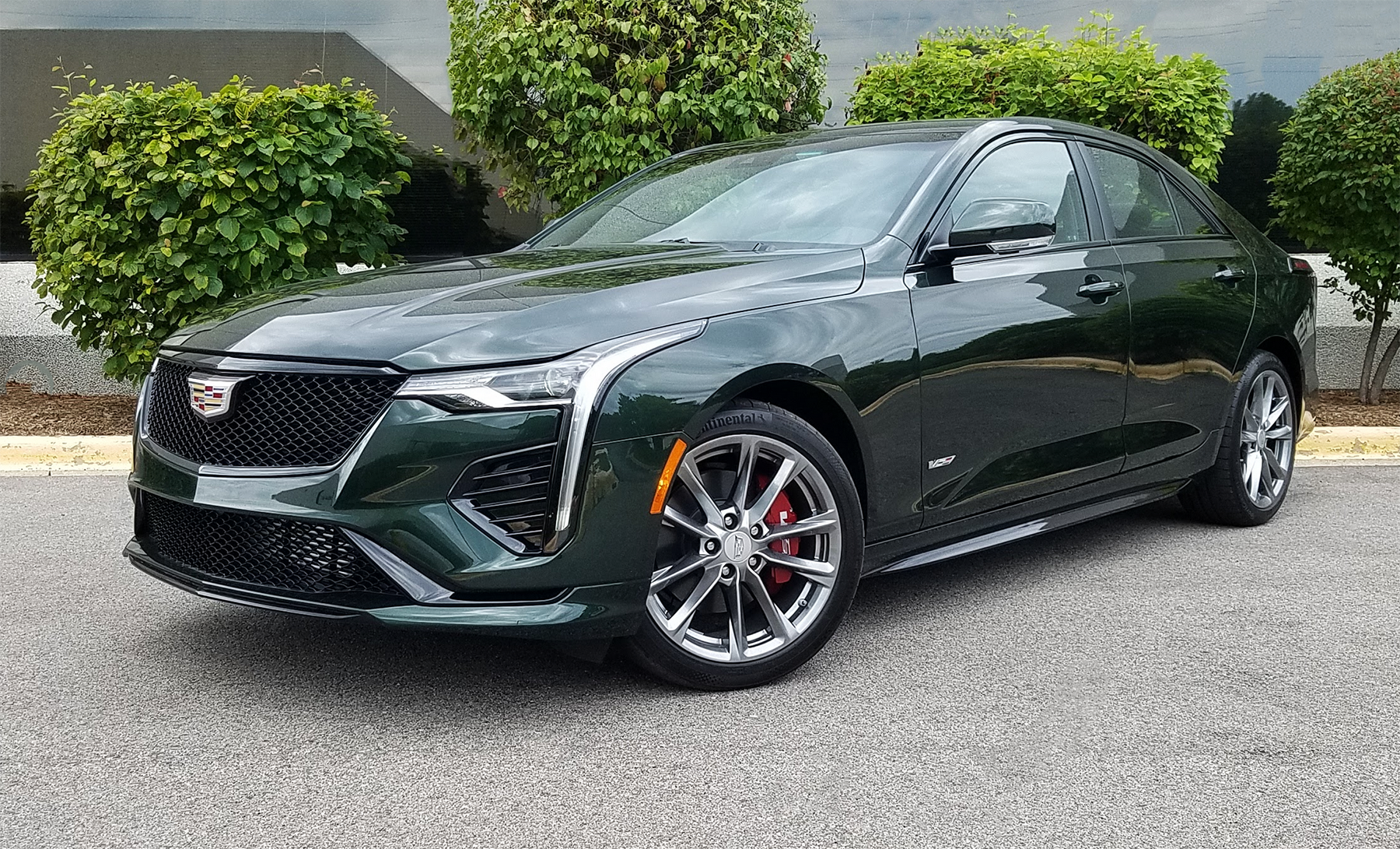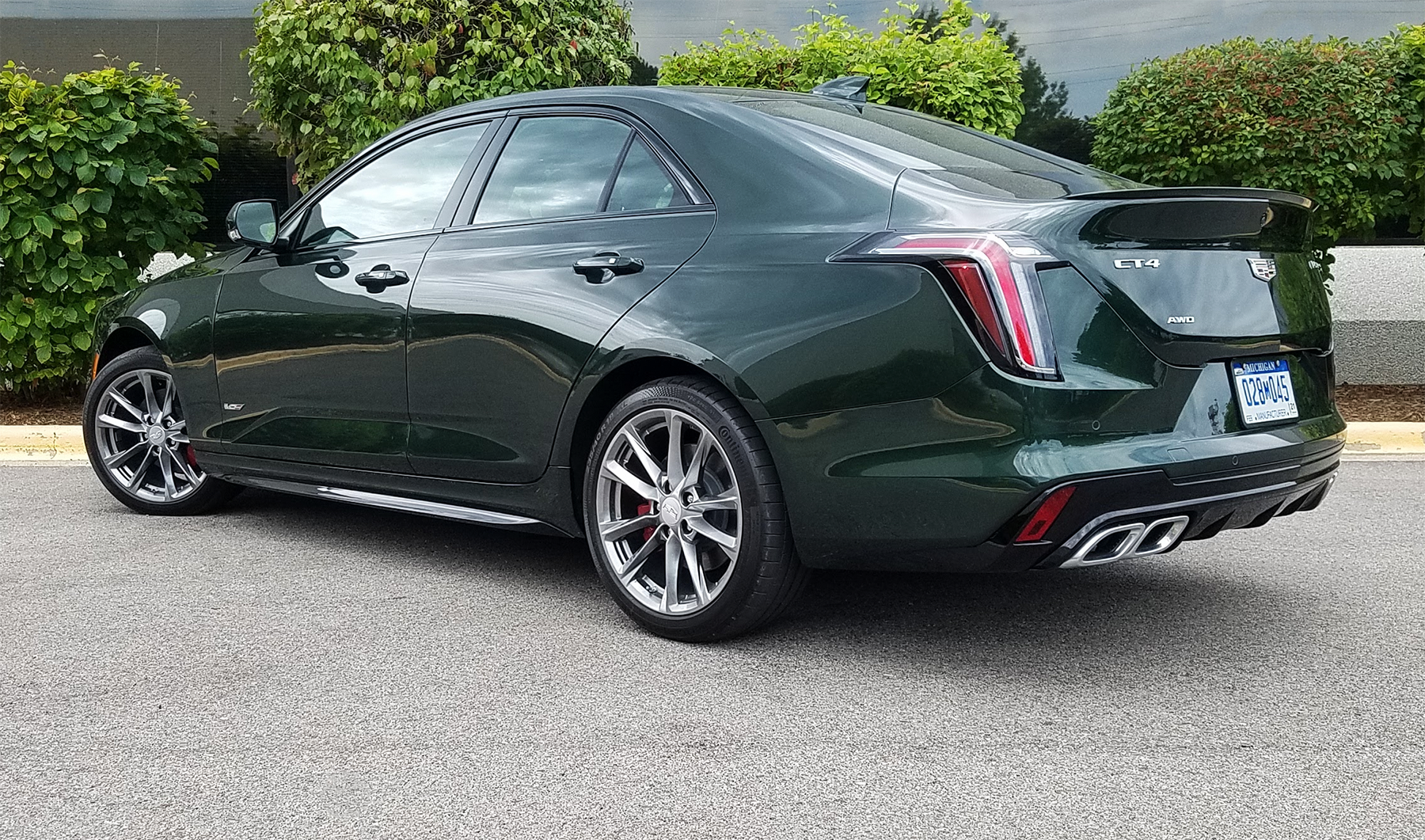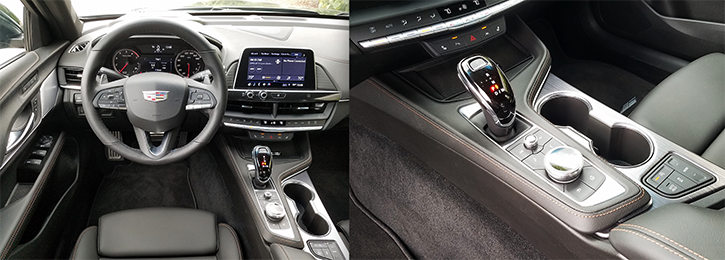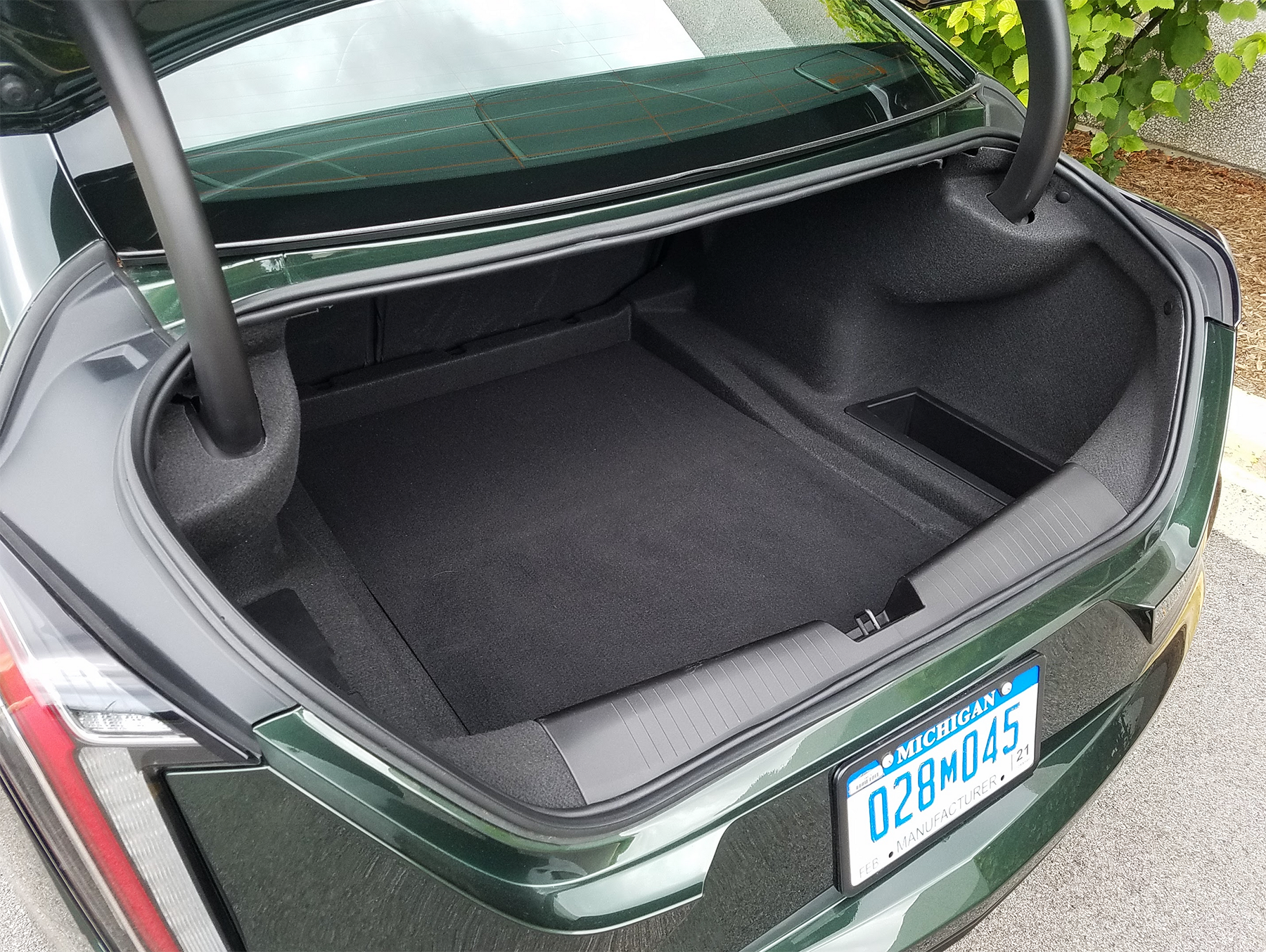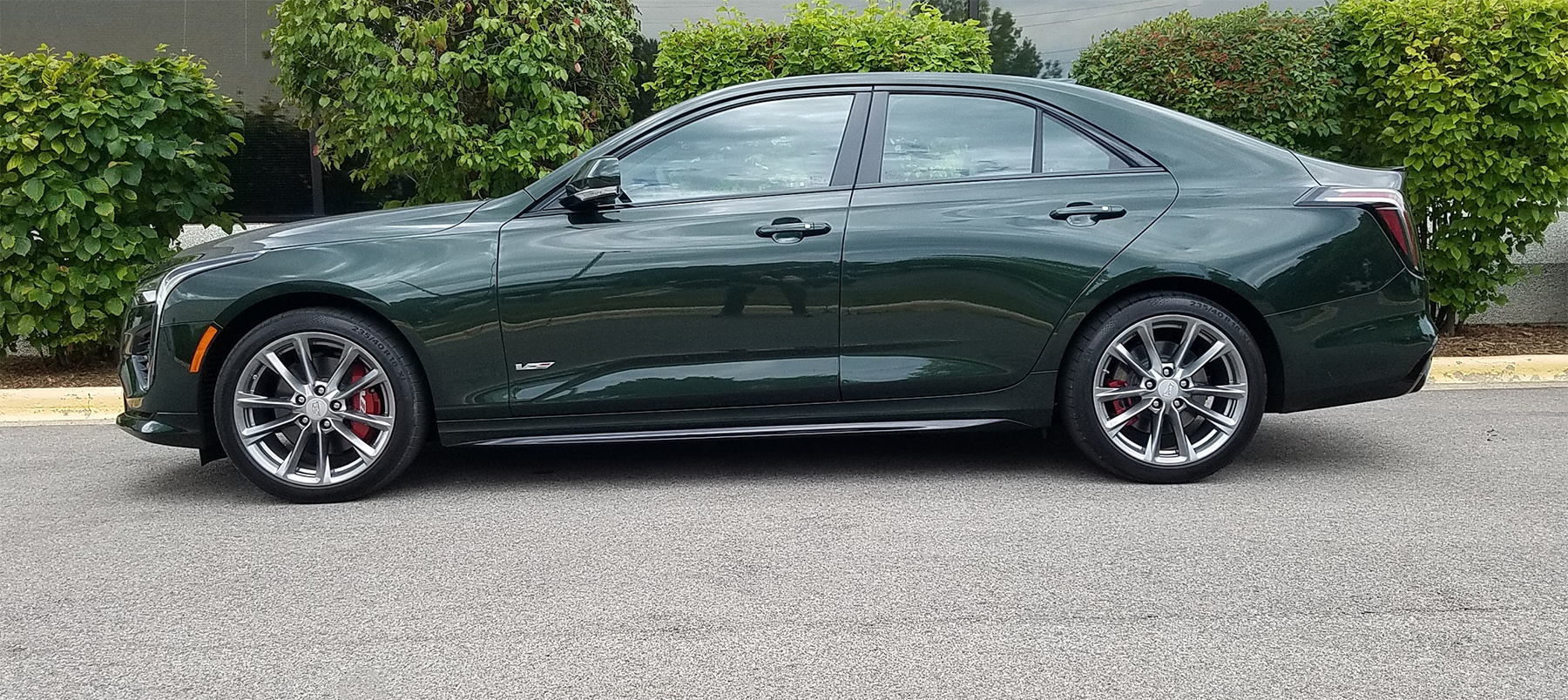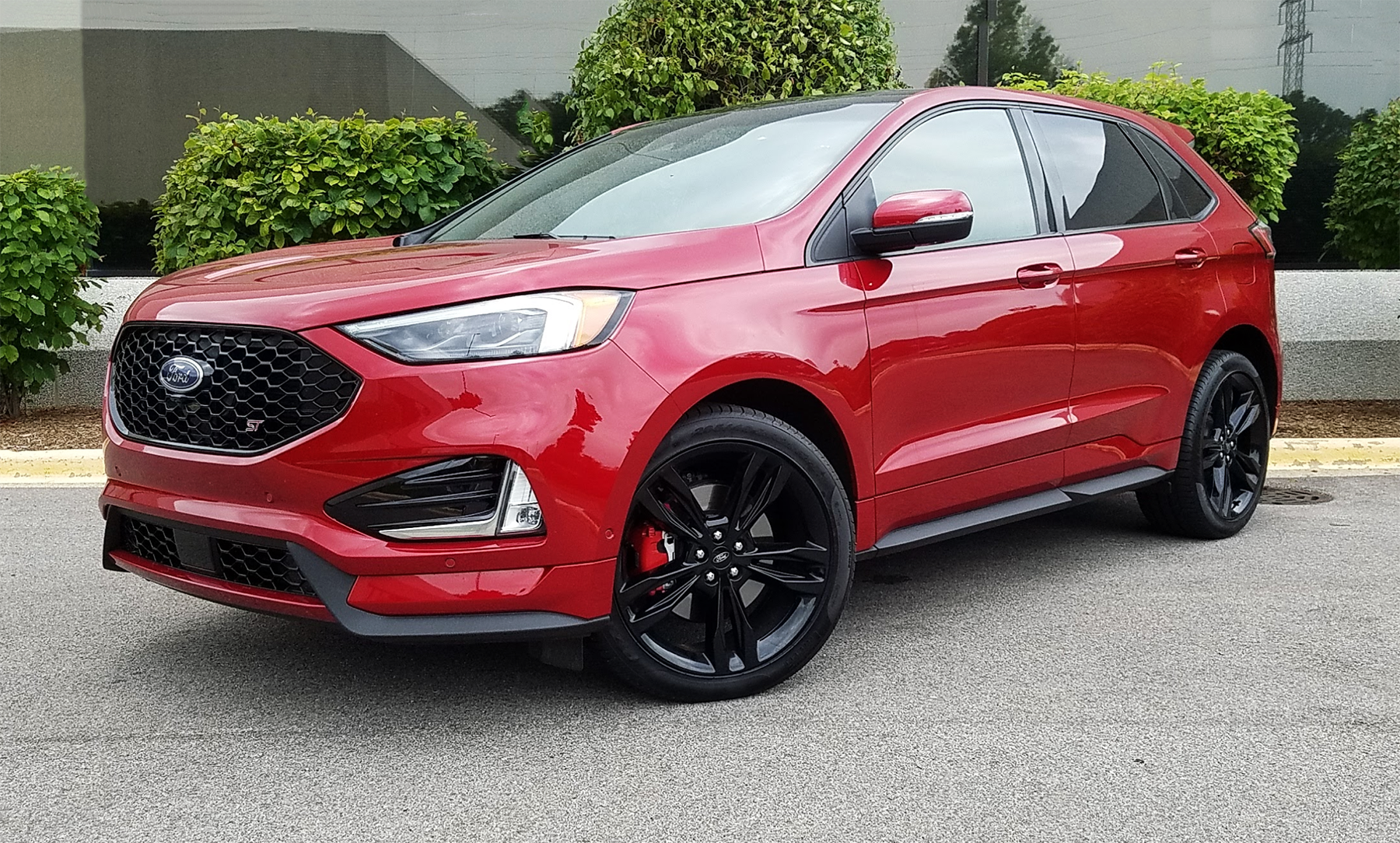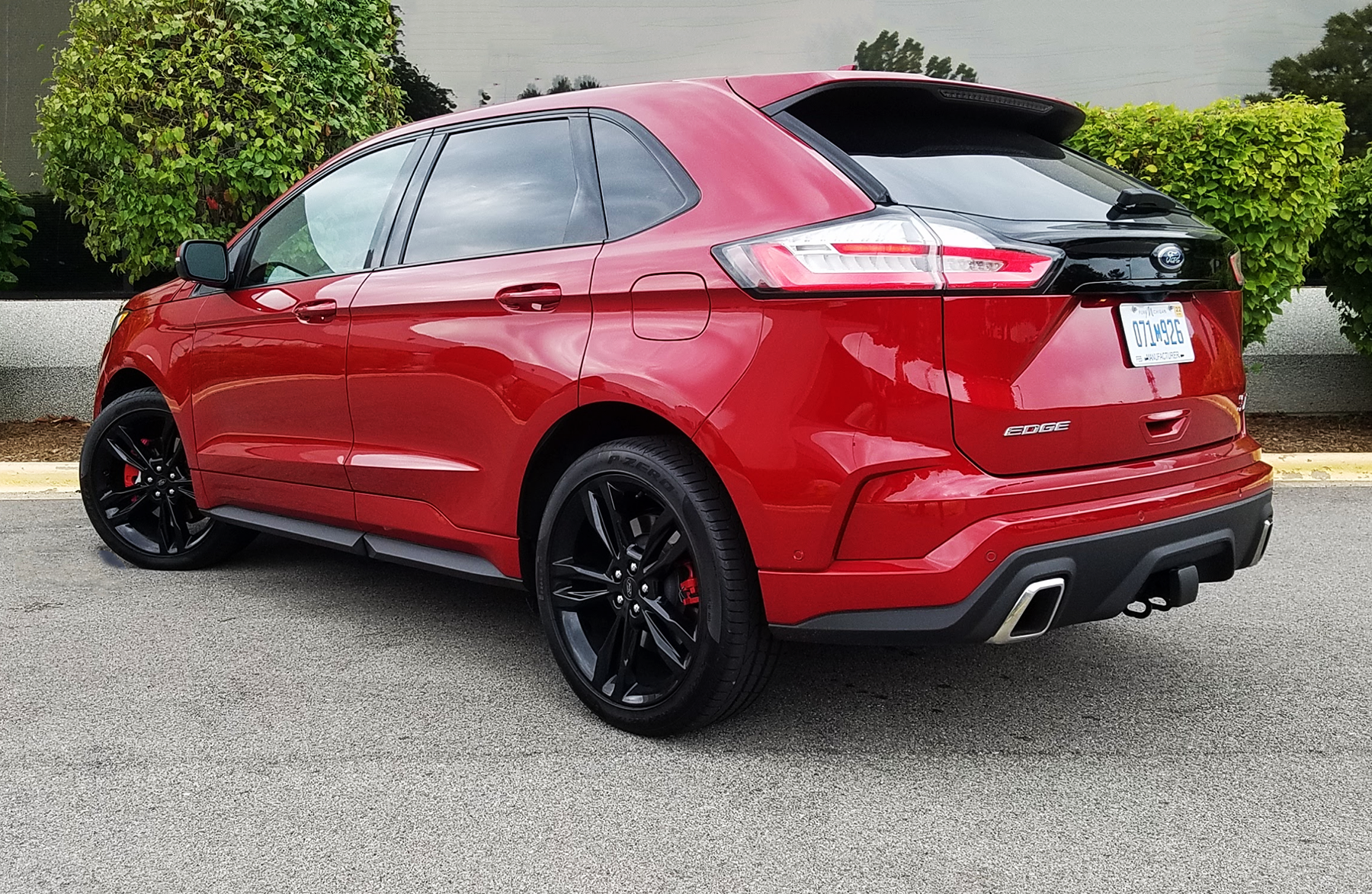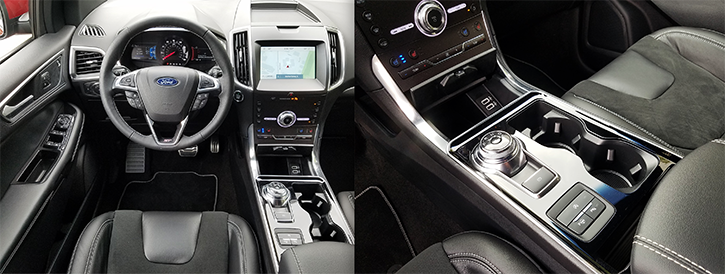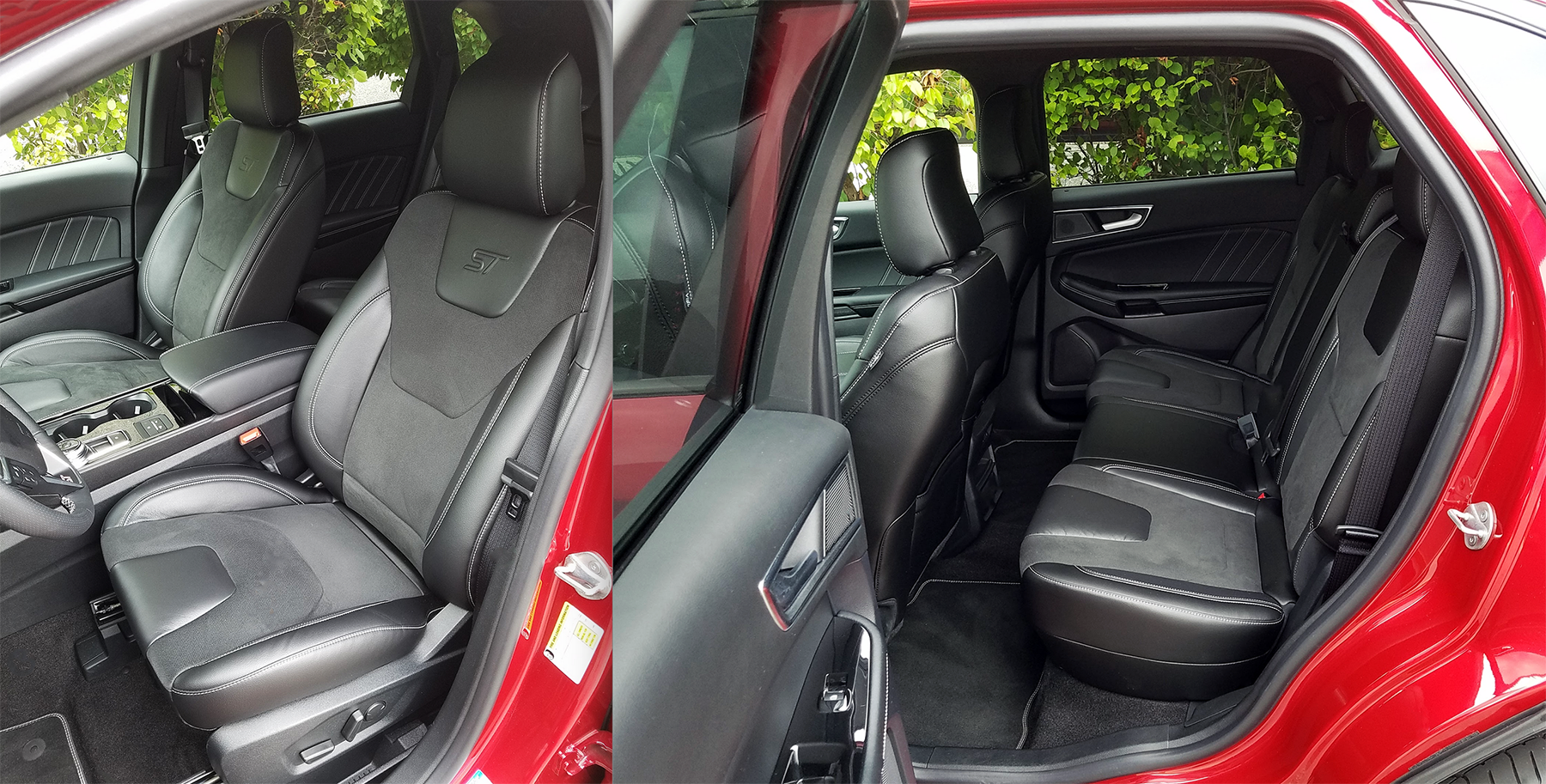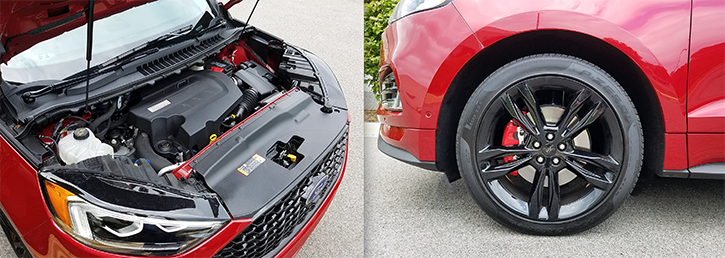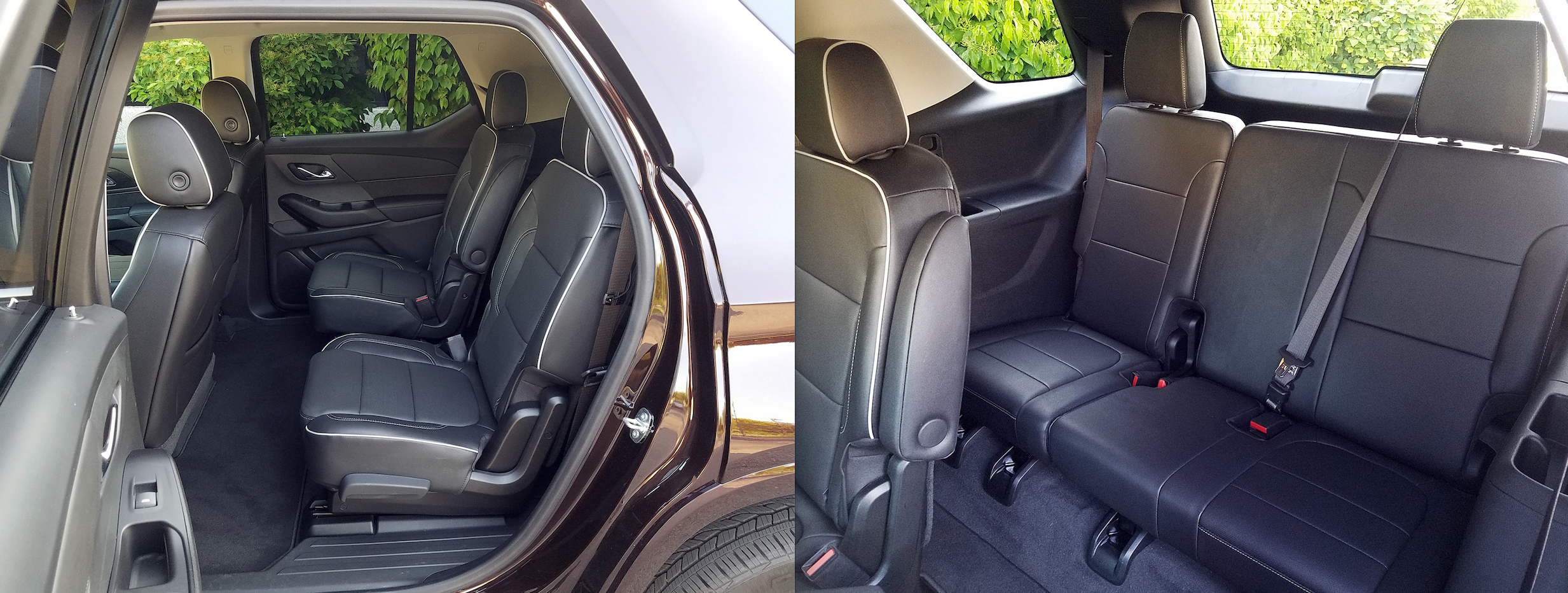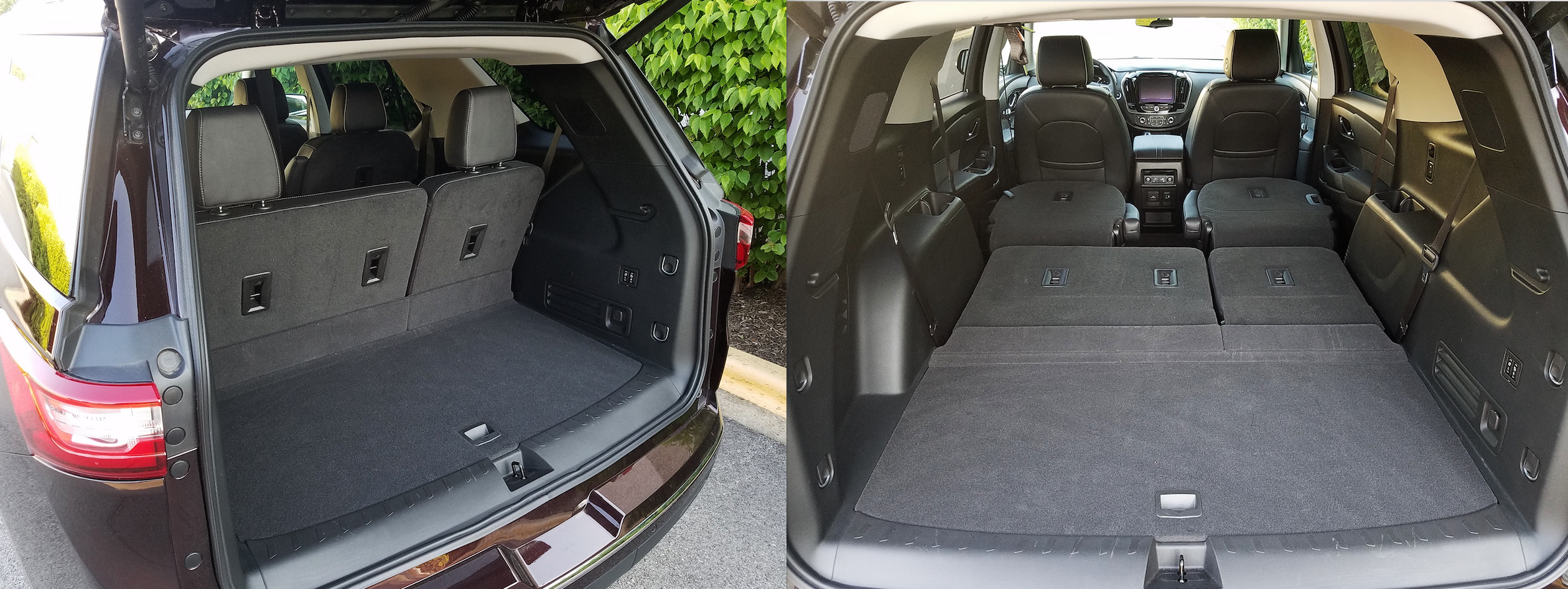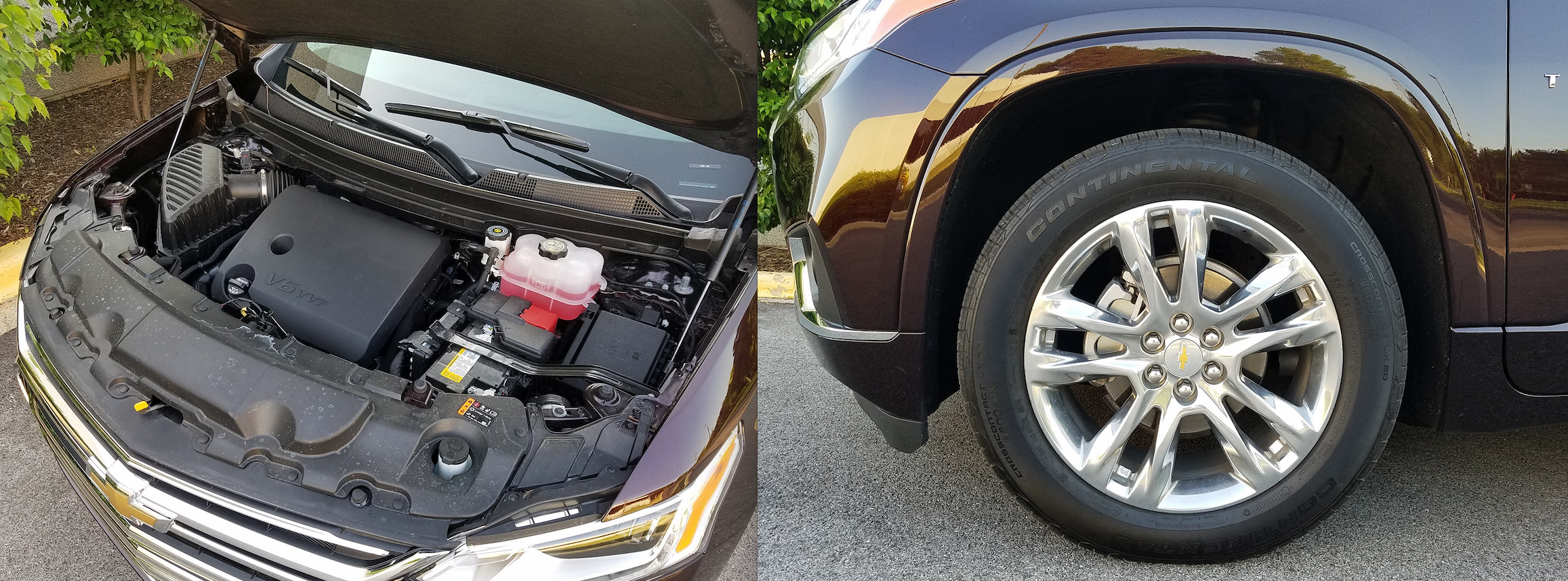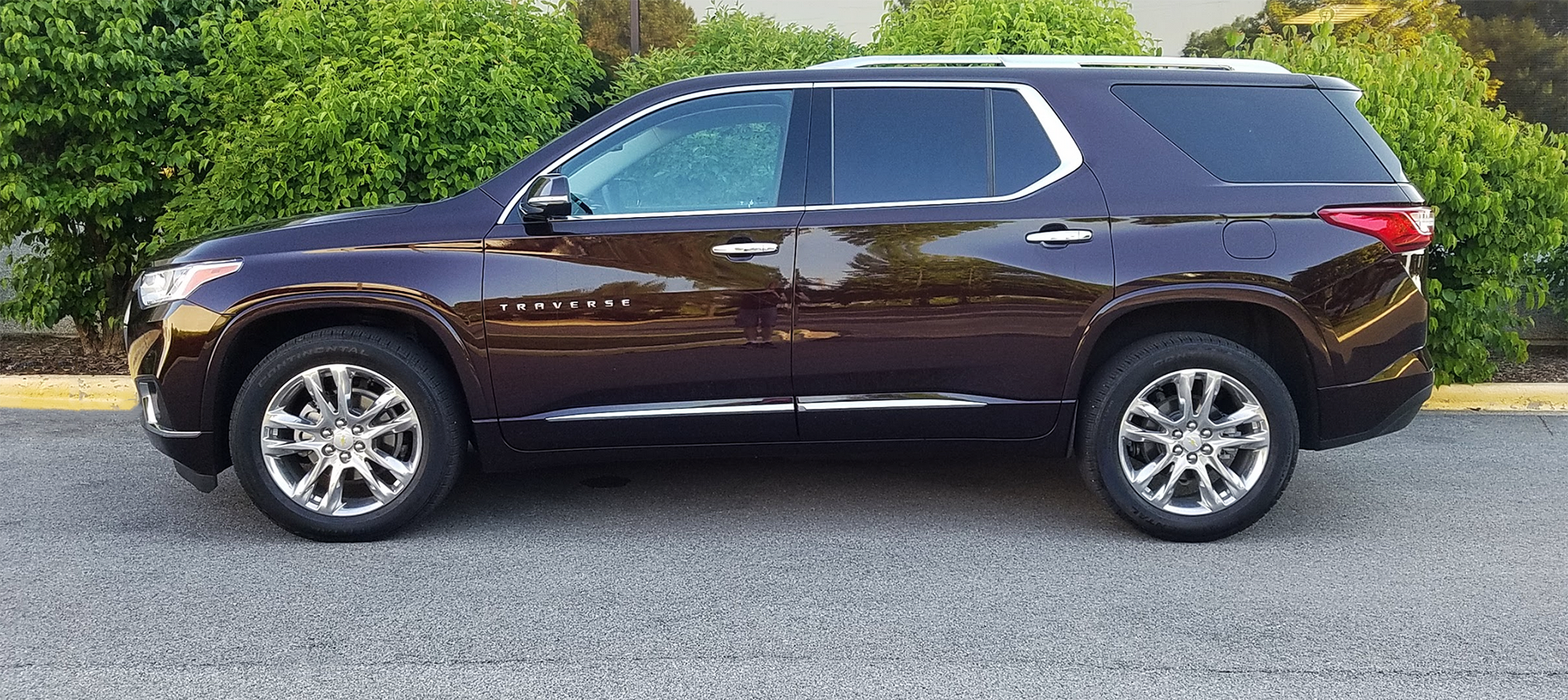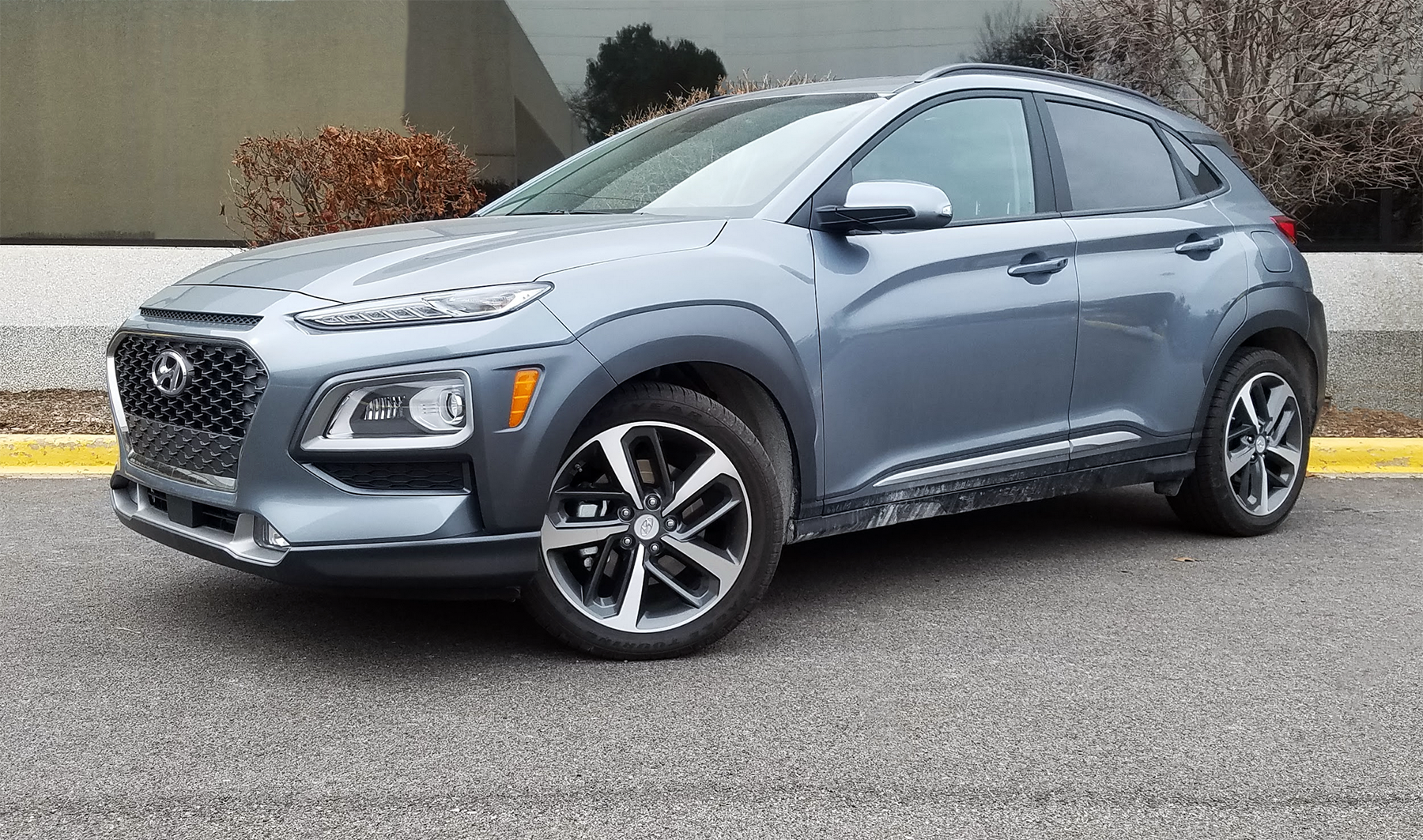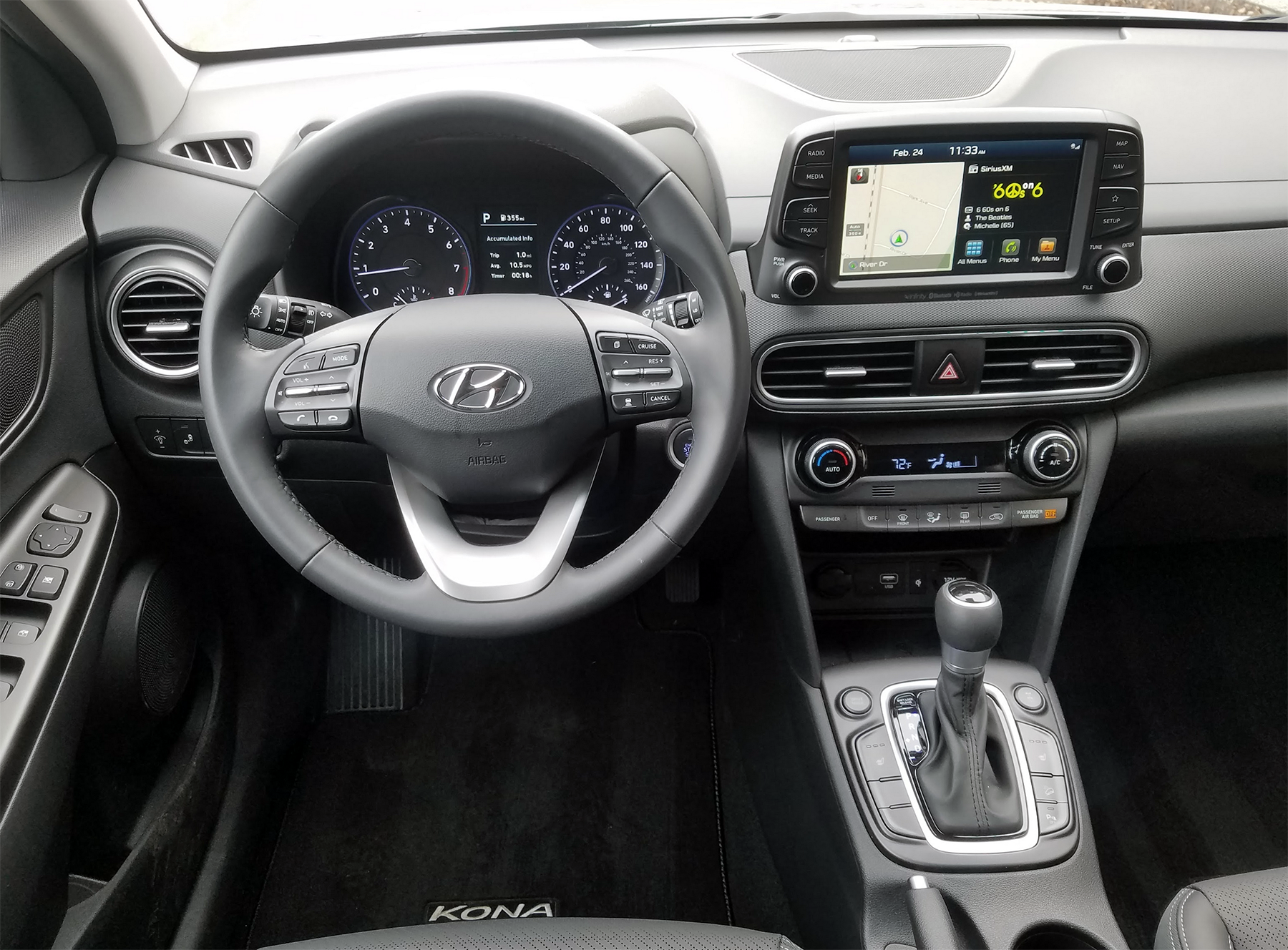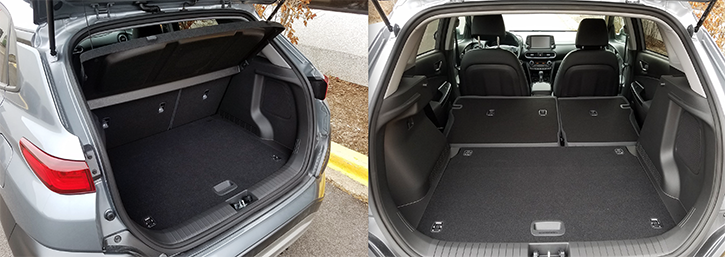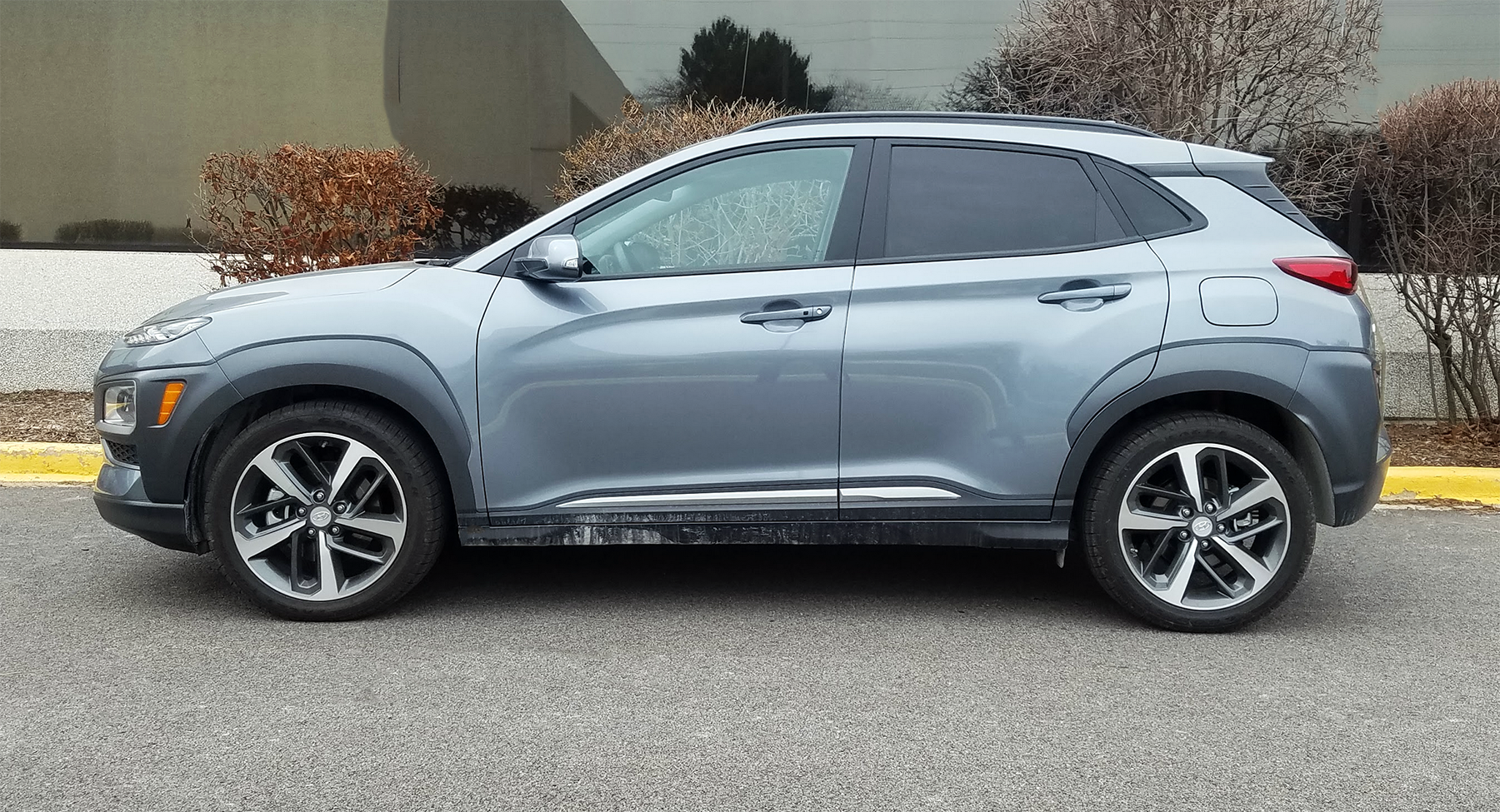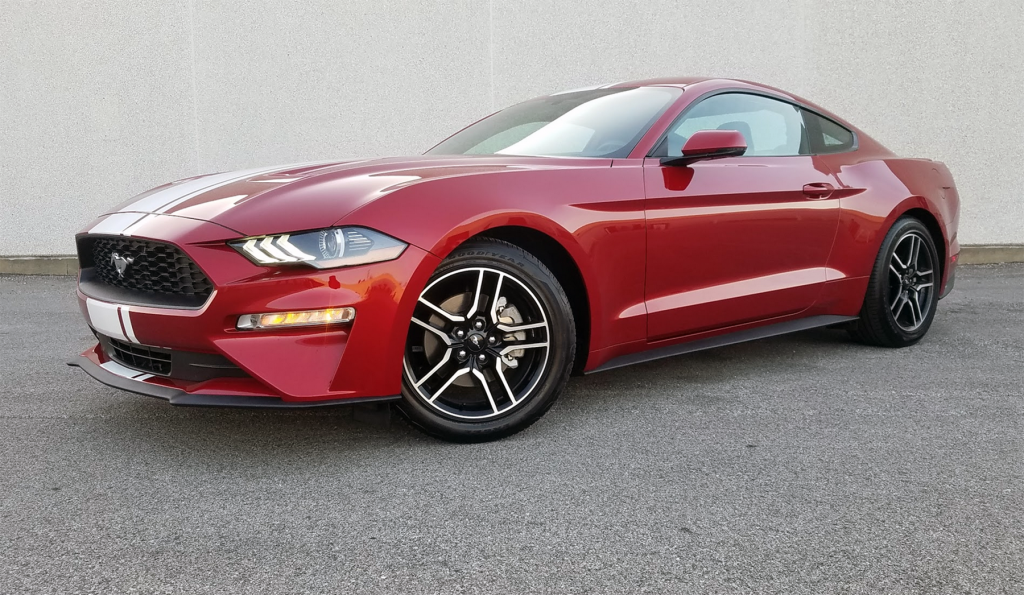
2020 Ford Mustang EcoBoost Coupe Premium in Rapid Red Metallic Tinted Clearcoat (a $395 option)
 2020 Ford Mustang EcoBoost
2020 Ford Mustang EcoBoost
Class: Sporty/Performance Car
Miles driven: 202
Fuel used: 8.7 gallons
Real-world fuel economy: 23.1 mpg
Driving mix: 45% city, 55% highway
| CG Report Card | |
|---|---|
| Room and Comfort | B |
| Power and Performance | B+ |
| Fit and Finish | B |
| Fuel Economy | B |
| Value | A- |
| Report-card grades are derived from a consensus of test-driver evaluations. All grades are versus other vehicles in the same class. Value grade is for specific trim level evaluated, and may not reflect Consumer Guide’s impressions of the entire model lineup. | |
| Big & Tall Comfort | |
| Big Guy | B- |
| Tall Guy | B- |
| Big & Tall comfort ratings are for front seats only. “Big” rating based on male tester weighing approximately 350 pounds, “Tall” rating based on 6’6″-tall male tester. | |
| Drivetrain | |
| Engine Specs | 310-hp 2.3L |
| Engine Type | Turbo 4-cylinder |
| Transmission | 6-speed manual |
| Drive Wheels | Rear-wheel drive |
EPA-estimated fuel economy: 21/30/24 (city/highway/combined)
Fuel type: Regular gas
Base price: $31,685 (not including $1095 destination charge)
Options on test car: Equipment Group 201A ($2200; includes Premier trim with color accent group, premium floor mats with accent stitching, voice-activated touchscreen navigation system, and blind-spot monitor with rear cross-traffic alert), Rapid Red Metallic Tinted Clearcoat paint ($395), over-the-top racing stripe ($475)
Price as tested: $35,850
Quick Hits
The great: Zippy acceleration for a turbo 4-cylinder engine; slick-shifting manual transmission
The good: Classic styling; comfortable ride for a sporty coupe; broad range of personalization options
The not so good: Cramped back seat; prices rise quickly as options are added
More Mustang price and availability information
John Biel
A nice thing about the Ford’s historic sport coupe is that you don’t need all the Mustang there is to still enjoy lots of Mustang. Properly equipped, even a 4-cylinder EcoBoost can be an eminently entertaining “ponycar.”
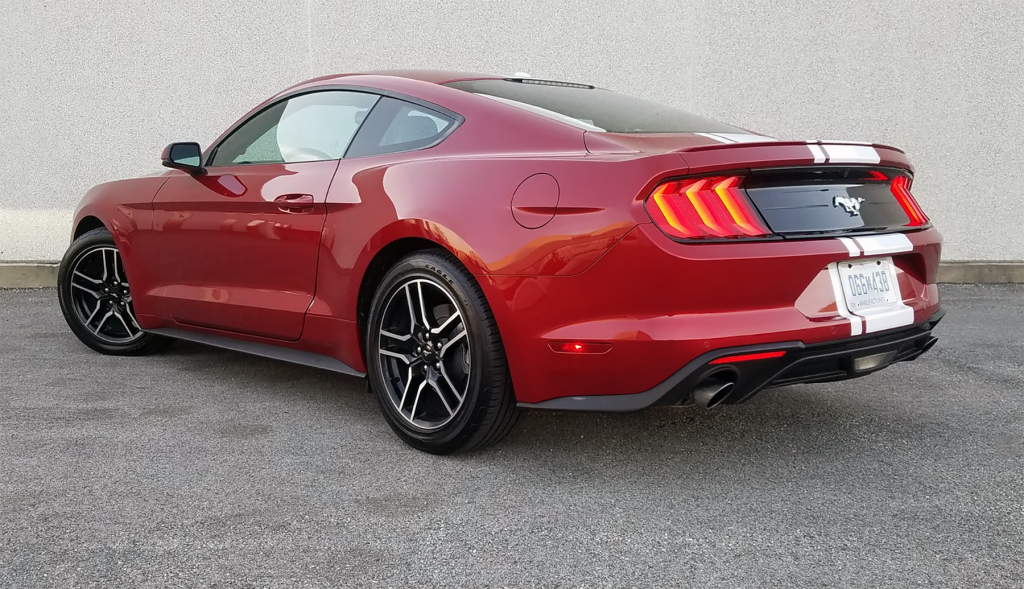
Though our test vehicle wasn’t equipped with them, Ford introduced a 2.3L High Performance Package and a handling package for EcoBoost Mustangs for 2020. For 2021, the Ford Co-Pilot360 suite of features becomes standard equipment.
Consumer Guide tested just such a Mustang, a 2020 Premium coupe with a 6-speed manual transmission, vibrant Rapid Red paint and white dorsal racing stripe, and Premier Trim accent group. There are quite a few other performance and appearance options that can make the entry-level Mustang more to a buyer’s liking as well. What was done to CG’s test car turned what started as a $32,780 car (with delivery) into one that cost $35,850.
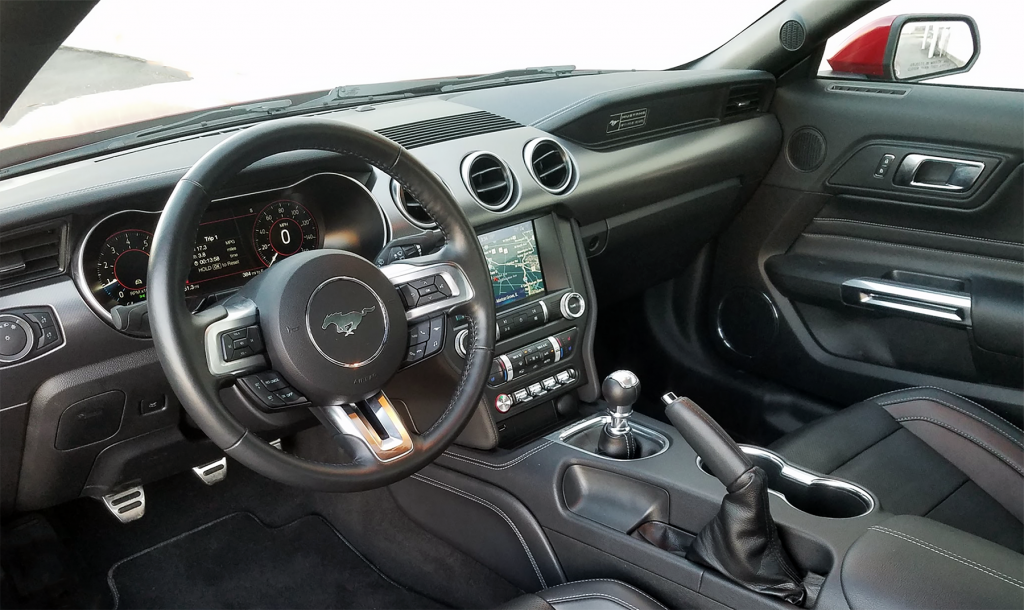
The EcoBoost Premium trim level adds a number of features over the base EcoBoost model, such as Apple CarPlay and Android Auto connectivity, Sync 3 infotainment system with 8-inch touchscreen, and a 9-speaker audio system.
Certainly, the big product story of 2020 for the Mustang was over at the other end of the corral with the launch of the high-performance Shelby GT500 model powered by a 760-horsepower supercharged V8. However, the EcoBoost was not overlooked. It was granted a High-Performance Package option that wrings an additional 20 horses from the 2.3-liter turbocharged mill and includes active-valve exhaust, heavy-duty front springs, specific chassis tuning, and 19-inch wheels. Separate from that, a new Handling Package was made available for the base model, and FordPass Connect—it allows owners to interact with the car via smartphone—was made standard on all models.
More Sporty/Performance car reviews

The Mustang’s slick, crisp manual shifter and smooth clutch are a joy to use. The front seats are comfortable and supportive; the Premium trim level adds power seat adjustment and leather upholstery.
The car CG sampled didn’t stray too far from the core specifications of the EcoBoost Premium coupe, which in 2020 was a $5015 step up from the entry-level car. That included things like LED fog lamps, power-adjustable heated mirrors with “pony”-image welcome lamps, blade-type decklid spoiler, and 18-inch machine-faced high-gloss black alloy wheels within 235/50R18 all-season rubber on the outside. Inside were leather power-adjusted seats, leather-wrapped steering wheel on a tilt/telescoping column, 12-inch digital instrument cluster, ambient lighting, dual-zone automatic climate control, Sync3 infotainment system with 8-inch screen, satellite radio, push-button starting, USB charging ports, Wi-Fi hotspot, and reverse-sensing system. The $2200 Premier Trim option imbued the car with voice-activated navigation, blind-spot and rear cross-traffic alerts, and interior color accents.
Test Drive: 2020 Chevrolet Corvette Convertible
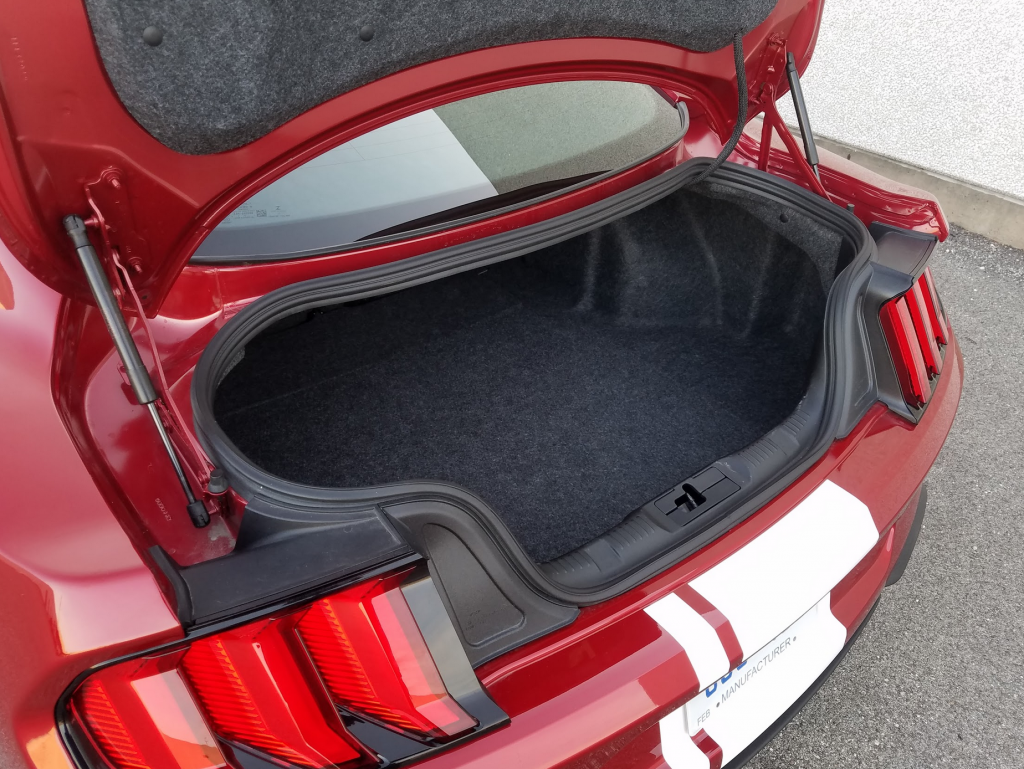
The Mustang coupe’s trunk volume is a respectable 13.5 cubic feet, but the aperture is a bit stingy and the load floor is somewhat shallow.
Without the High-Perf option, the 2.3 engine puts out a 310 horsepower and 350 lb-ft of torque, pretty healthy for four cylinders. (Though the package provides a score more ponies, thanks to a larger-capacity twin-scroll turbo, it develops the same amount of peak torque.) Pick-up is perky and there’s a standard limited-slip differential to help make sure none of it goes to waste, but you will have to step up to one of the V8-powered models for truly thrilling performance—and sound. The standard-tune dual exhaust isn’t exactly symphonic with the 4-banger. At least the tester had the standard 6-speed stickshift. It permits direct, precise shifts to help drivers keep the power up, but there’s enough torque on tap to limit the need for power-goosing downshifts. The EPA estimates this powerteam to be good for 21 mpg in the city, 30 mpg on the highway, and 24 combined; this driver averaged 22.97 mpg from a 69.7-mile stint composed of 49 percent city-type driving.
By sticking to the standard tires with their deeper sidewalls and the base suspension package, EcoBoost owners enjoy a greater degree of ride comfort than those with mightier Mustangs experience. Of course, cornering prowess isn’t as great as in the hairier models, but there still are pleasing levels of steering response and body control for fun driving.
In most other aspects, the ’20 EcoBoost Premium was like other Mustangs of its generation that CG has tested. There’s acceptable passenger room in the front row for most occupants—though tall folks could do with a little more headroom, and drivers enjoy pretty good sightlines, especially relative to some of its sporty/performance-class competitors. Passengers on the 60/40-split rear seats will likely be children—or cargo—because headroom drops off substantially and legroom ranges from little to none depending on the needs of the people up front.
The wide trunklid opens over a flat trunk floor that is long but not especially tall. Liftover is fairly high, but body-mounted piston hinges for the trunklid don’t intrude into the cargo area. The 13.5 cubic feet of trunk space in coupes expands when the rear seats are folded, however they rest above the level of the trunk floor, and a package shelf over a bulkhead limits the size of items passing through from the trunk.
Test Drive: 2020 Nissan 370Z NISMO
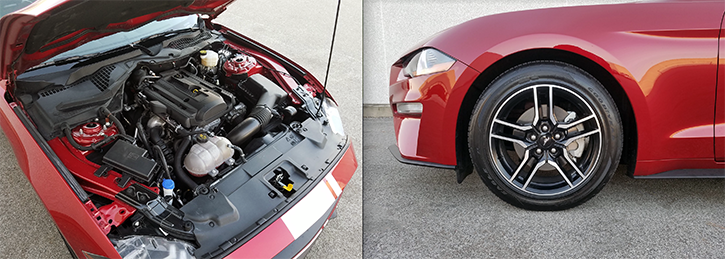
The EcoBoost 2.3-liter 4-cylinder is the Mustang’s base engine, and it pumps out a more-than-respectable 310 horsepower. EcoBoost Premium models get an upgrade to 18-inch aluminum wheels over the standard 17s.
Seats are comfortable and supportive but there’s only moderate use of soft-to-the-touch surfaces around the cabin. The Sync3 system is straightforward in operation for easy access and programming. Large external volume and tuning knobs reside below the display screen. We’d like the climate controls better with fewer buttons. At least temperatures can be set directly by driver and passenger by pushing a lever up for heat or down for cooling. Personal-item storage needs are served by a usefully sized glove box, a small console cubby that also holds the media-device ports, a pair of open cup holders in the console, and long door pockets.
An EcoBoost may have half the cylinders of other Mustangs—and even half the price tag in some cases. That doesn’t necessarily mean it’s half the car, though.
Quick Spin: 2020 Dodge Challenger R/T Scat Pack Widebody
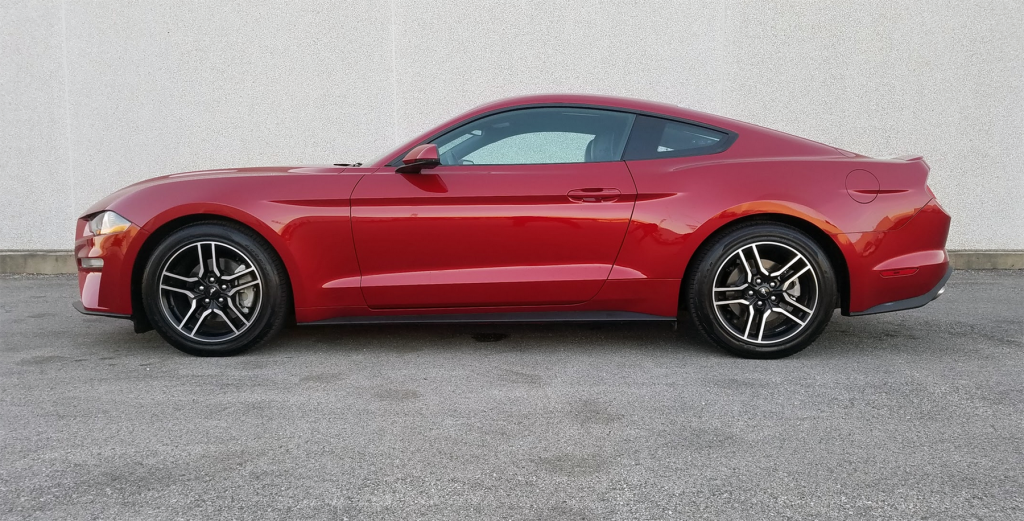
It might not have the muscle-car performance of its V8-powered stablemates, but the Mustang EcoBoost is no slouch–it offers satisfying all-around performance and, outside of the typical sporty-coupe compromises, daily-driver practicality.
(Click below for enlarged images)
Listen to the very entertaining Consumer Guide Car Stuff Podcast
2020 Ford Mustang EcoBoost
2020 Ford Mustang EcoBoost
For GREAT deals on a new or used Kia check out Winn Kia TODAY!
